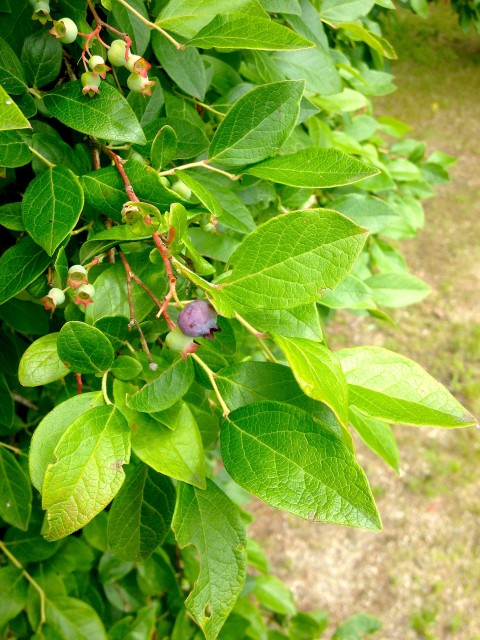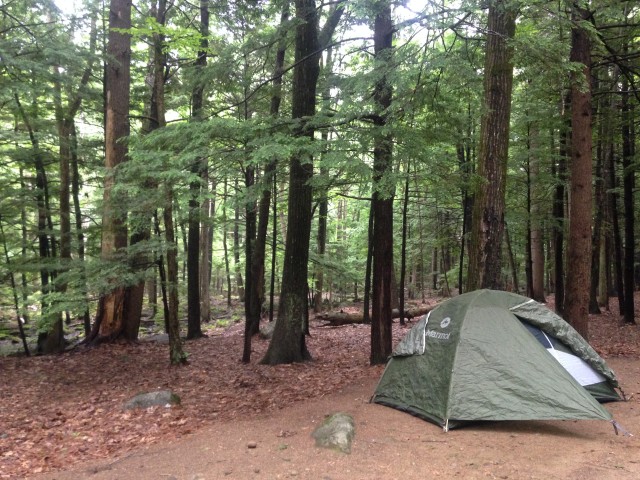
As the Interpretive Ranger at Pawtuckaway State Park, I have the pleasure of living in the woods all season. My cozy campsite offers many appealing features; nighttime calls from my Barred Owl neighbor, a view of a misty wetland, sights and sounds from Pileated Woodpeckers, and the simple pleasures of cooking over a propane burner. One thing that it does not offer, however, is a refrigerator. This was a bit intimidating for me, as my favorite foods consist largely of fresh fruits and veggies. Yet to my utter amazement and surprise, I found a world of fresh food inside those very woods that I call home. With the right eye and mindset, you too can find a delicious meal from the wild edibles that are teeming inside the forest. Let me show you some of my favorite New Hampshire nibbles.
Please note: When you are searching for some tasty woodland treats, please always bear in mind some basic rules of foraging. ALWAYS be sure of your identification! Cross-reference multiple field guides, bring a more experienced friend with you, and do your research beforehand. Get to know the toxic look-alikes of the plants you’re searching for. Be mindful of the source you are taking plants from. Plants from highly polluted roadsides or bacteria-infested water source may cause harm to you. Never take more than you need! Finally, give your edibles a good rinse before you dive in.
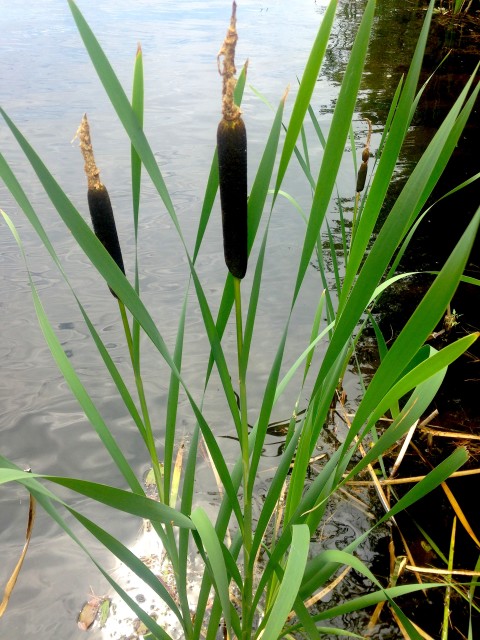
No wild edibles lesson would be complete without becoming familiar with the many uses of cattails. Cattails have been long known as “the ultimate survival tool”, and for good reason. These plants have both male and female parts, and in the above photo, the golden-yellow male rod sits above the brown female stock. The yellowy grains on the male portion is pollen, which can be collected and used as a flour substitute. This male spike looked much different a few months ago in the early spring; before it flowered and became covered in pollen, it was a simple green stalk. Pluck off this spike, peel off the outer covering, boil it, slather it in butter, and you have a delicious treat that tastes much like corn on the cob! My favorite part of the cattail requires a bit more work. By peeling off all of the leaves of the main stalk of the plant, eventually you will reveal the whitish lower stalk. Eaten raw, it resembles a fresh cucumber. When boiled or sauteed, its flavor changes to that of an asparagus. The cattail offers much more than food; the brown female portion is filled with highly flammable material that can be used as a great fire starter or torch. The leaves of the plant are extremely durable and therefore make wonderful weaving material. Beware of the toxic look-alike, Purple Iris. I have yet to find any in Pawtuckaway, but it is distinguishable from the Cattail by the base of the stem; the Iris is oval-shaped while the Cattail is circular.
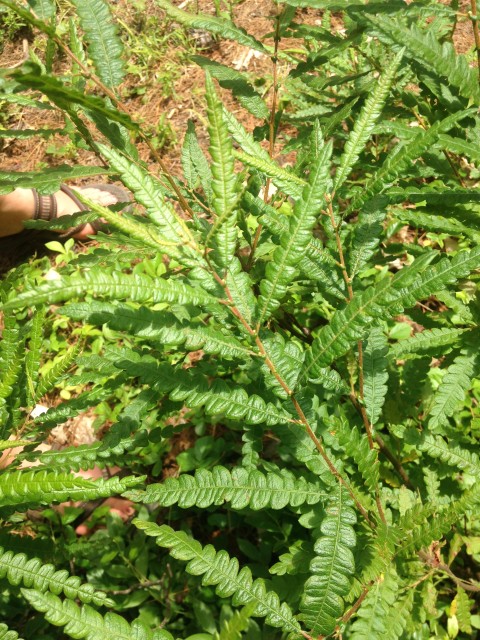

These two plants are a match made in heaven; Wintergreen and Sweet Fern. Wintergreen is extremely common on shady forest floors; the waxy green leaves and minty smell is a giveaway. Sweet Fern, while less common, is also recognizable by its smell. Somewhere between Lavender and Mint, this wonderfully fragrant plant is a favorite of mine. Together, they make a refreshing summer tea! I recommend tearing up the leaves and steeping them in hot (NOT boiling) water for as long as you’d like; this tea doesn’t get bitter, just stronger. Pour over ice and enjoy! Sweet Fern is also a natural mosquito repellent, so take a second to rub the leaves on your skin to avoid those pesky bites.
Blueberries are perhaps the most abundant wild edible at Pawtuckaway State Park. They come in high-bush and low-bush varieties and they are equally tasty. Look for these tasty treats along trails, on the edges of the many islands on Pawtuckaway Lake, and around your campsites. There are even a few bushes right next to the beach! Wild blueberries have double the nutrients and antioxidants of the grocery store berries, so eat away! I like to put a handful of these berries in my morning oatmeal, or throw a few in my iced tea. They also make a very tasty preserve.
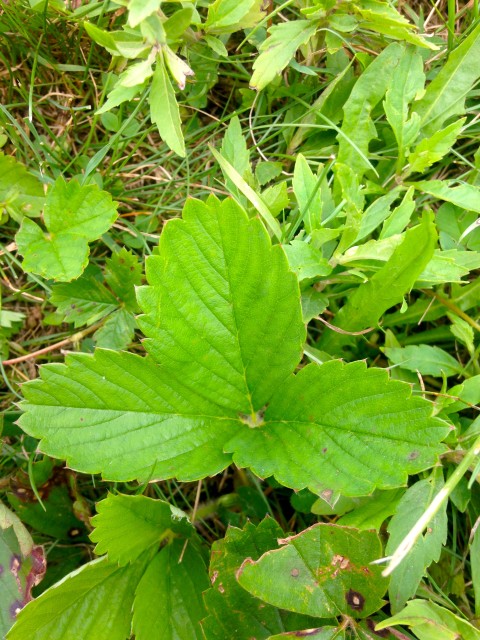
Strawberries are another tasty summer treat, and they oftentimes go unnoticed. They always have three leaves, so beware of Poison Ivy lookalikes when the plant is not fruiting. However, Poison Ivy grows on a vine, while Strawberries pop up singly from an underground stem system.
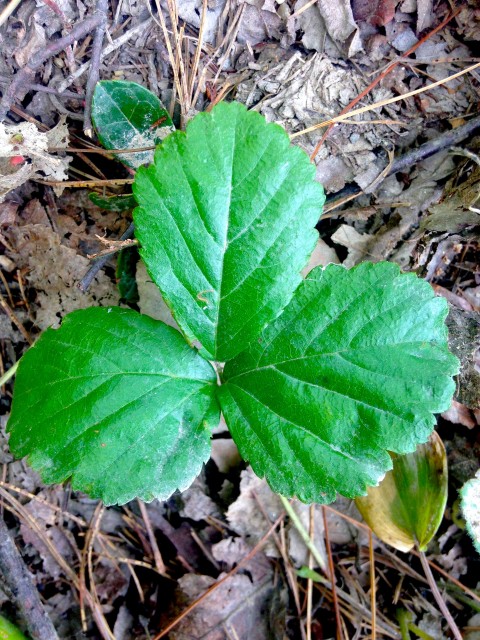
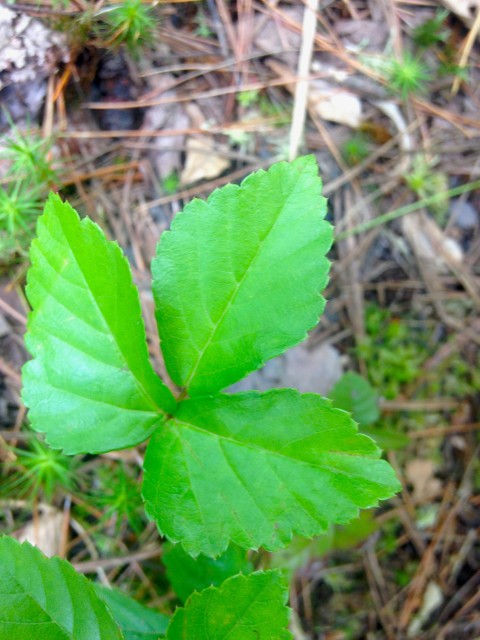
Dewberries are another very common edible three-leaved plant in the park. They come in a few varieties, but there is one way to clearly distinguish them from Strawberries. Notice how the Strawberry plant in the above picture has many “teeth”, or jagged points, along the outside of the leaf? The Strawberry is unique in that the middle tooth is smaller than the surround teeth. Follow the midline of the Strawberry leaf all the way to the top. Do you see how this tooth is slightly smaller than the rest? Notice how the two Dewberry varieties do not have this characteristic. Some of the Strawberries in the park are starting to fruit, but the real feast will start later in this month.
When you are searching for some tasty woodland treats, please always bear in mind some basic rules of foraging. ALWAYS be sure of your identification! Cross-reference multiple field guides, bring a more experienced friend with you, and do your research beforehand. Get to know the toxic look-alikes of the plants you’re searching for. Be mindful of the source you are taking plants from. Plants from highly polluted roadsides or bacteria-infested water source may cause harm to you. Never take more than you need! Finally, give your edibles a good rinse before you dive in. I wish you all the best of luck with your forages. Stay safe and enjoy the feast in our forest!
-Renee, Pawtuckaway State Park

